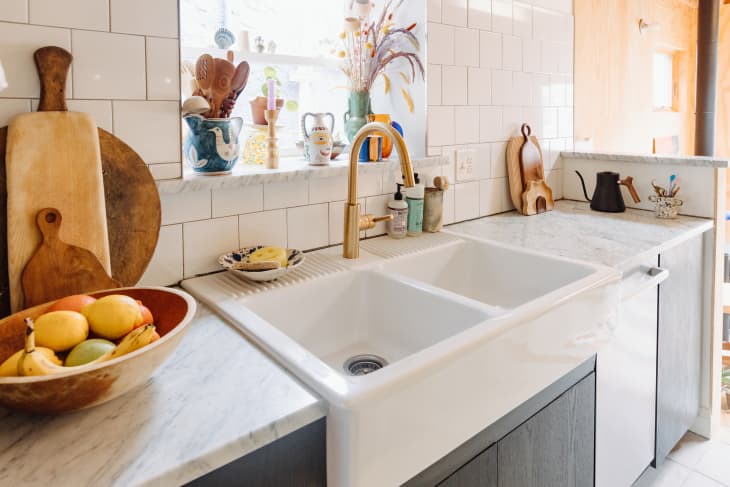Kitchen Upgrade Making Cooking and Cleaning Tougher

When I bought my townhome, the first project was a kitchen facelift. Out with the builder-grade tiles and blotchy counters, and in with a light, bright color scheme and luxe quartzite counters. However, my decision to install a 60/40 double sink turned out to be a major mistake.
I thought multiple sinks were a sign of a well-appointed kitchen, offering efficiency in washing and soaking. But the reality was far from ideal. The larger basin of the double sink proved too small for practical use. It couldn’t accommodate standard-sized pans, forcing awkward scrubbing angles and risking damage to both the sink and counters.
Moreover, the sink’s shape made it impossible to use protective measures around the faucet, leaving the countertops vulnerable to water damage. The design also led to constant splashing, resulting in soap scum and water marks that required frequent cleaning.
The idea of soaking or washing fruits and vegetables in the sink became unappealing due to concerns about cleanliness. Despite efforts to keep the sink sanitized, residues still collected, exacerbated by the draining rack positioned over it.
Overall, the double sink, meant to aid in kitchen cleanliness, became a hindrance. Its impractical size and shape made tasks cumbersome and counterproductive. It served as a cautionary tale against prioritizing aesthetics over functionality in kitchen upgrades.
In hindsight, opting for a different sink configuration or even a single basin would have been a wiser choice. So, learn from my mistake and steer clear of the double sink dilemma!
Re-reported from the article originally published in the kitchn.








